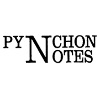Abstract
Beyond their focus on Pynchon's fiction, Alan W. Brownlie's Thomas Pynchon's Narratives and Charles Clerc's Mason & Dixon & Pynchon have little in common: they address different novels; they take different approaches; they seem to have different purposes. But in reading them, I found myself pondering the same issue: the idea of audience. When we, the community of Pynchonians, write, for whom, exactly, are we writing? The easy answer, of course, is each other–scholars who have chosen to devote a good part of their professional activity to studying, interpreting and teaching Pynchon's work. This audience is pretty well represented, I imagine, by the regular readers of this journal. A second audience is students, those studying Pynchon in hopes of joining the above-mentioned community and those studying him, perhaps, but not always, with less enthusiasm, for a graduate or undergraduate course while on their way to other professional goals. After that, the idea of audience gets a little murky. We might imagine an audience of nonacademic readers, but the many Pynchon enthusiasts I know who are not professional scholars have little interest in (if not outright contempt for) academic writing. We might imagine an audience of readers we can initiate into Pynchon fandom. (When I was writing my dissertation on Gravity's Rainbow, my director suggested I write about my subject in such a way that my readers would want to run out and buy the book.) This is a noble idea, and I have often heard conference papers on books I hadn't read that inspired me to get them; but practically speaking, I doubt the ranks of new readers are especially swollen because of books by academic specialists.
How to Cite:
L. McLaughlin, R., (2001) “Talking to Themselves”, Pynchon Notes , 217-224. doi: https://doi.org/10.16995/pn.102
Downloads:
Download PDF

